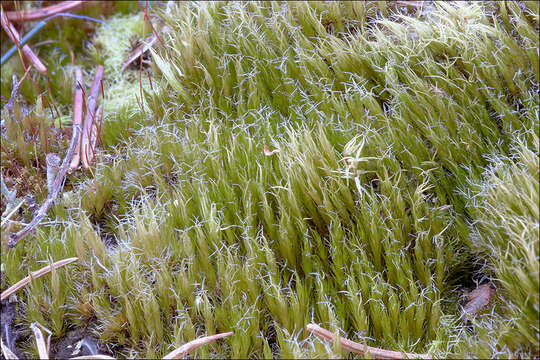Campylopus-introflexus_4

Description:
Campylopus introflexus (Hedw.) Brid.Family: DicranaceaeEN: Heath Star-moss, DE: Einwrtsgebogenes Krummstielmoos, KaktusmoosSlo.: no name (yet)Dat.: March 19. 2022 Lat.: 46.36000 Long.: 13.69950Code: Bot_1444/2022_DSC6371Habitat: dry grassland, small former pasture now partly overgrown with bushes (Corylus avellana dominant) and scattered small trees (Fraxinus ornus, Ostrya carpinifolia, Picea abies); calcareous ground; slightly inclined mountain slope, southeast aspect; warm, half sunny, dry place; exposed to direct rain, average precipitations ~ 3.000 mm/year, average temperature 7-9 deg C, elevations 635 m (2.080 feet), alpine phytogeographical region.Substratum: shallow, sandy soil.Place: Lower Trenta valley, right bank of river Soa; between villages Soa and Trenta; near Soa 48 abandoned cottage, East Julian Alps, Posoje, Slovenia EC. Comments (pertain to pictures in the Flicker album Campylopus introflexus): This species is a rapidly spreading invasive plant native to south hemisphere. It was probably introduced to Europe in the thirties of the 20th century and first observed in England in 1941. In 1956 it was first found in continental Europe and 1967 in Germany. Today it is known from many European countries and almost literally in every MTB square in England (that means in every 10 x 10 km region). In Slovenia only two finds have been known so far. Both are in the eastern part of the country. This observation is the third one and the first in the alpine phytogeographical region of Slovenia.When dry, Campylopus introflexus can be easily recognized by shiny, colorless and toothed leaf hair points, which are set at almost right angle to the rest of the leaves and stems. From top the plants look like small cactuses (see Fig. 2 and German common name). When most the leaves are strait. The starry appearance disappears and the determination in the field becomes more difficult. Also young plants often lack these characteristic hair points.The moss is known as a species of typically moist places usually avoiding basic, calcareous ground. The plants in the Trenta valley grow on all but such places. May be that this wide environmental latitude of the species contributes to its recent fast spreading in Europe.Ref.:(1) Ian Atherton, Ed., Mosses and Liverworts of Britain and Ireland - a field guide, British Bryological Society (2010), p 400. (2) M. Nebel, G. Philippi, eds., Die Mosse Baden-Wurttembergs, Band 1., (2000), Ulmer, p 169. (3) V. Wirth, R. Duell, Farbatlas Flechten und Moose, Ulmer, (2000), p 230.(4) M. Lth, Mosses of Europe A Photographic Flora, Michael Lth, Vol. 2., 2019, pp 485.
Included On The Following Pages:
- Life (creatures)
- Cellular (cellular organisms)
- Eukaryota (eukaryotes)
- Archaeplastida (plants)
- Chloroplastida (green plants)
- Streptophyta
- Embryophytes
- Bryophyta (mosses)
- Bryopsida (True Mosses)
- Dicranales
- Dicranaceae
- Campylopus (campylopus moss)
- Campylopus introflexus (campylopus moss)
This image is not featured in any collections.
Source Information
- license
- cc-by-nc-sa
- copyright
- Amadej Trnkoczy
- photographer
- Amadej Trnkoczy
- original
- original media file
- visit source
- partner site
- Flickr Group
- ID


